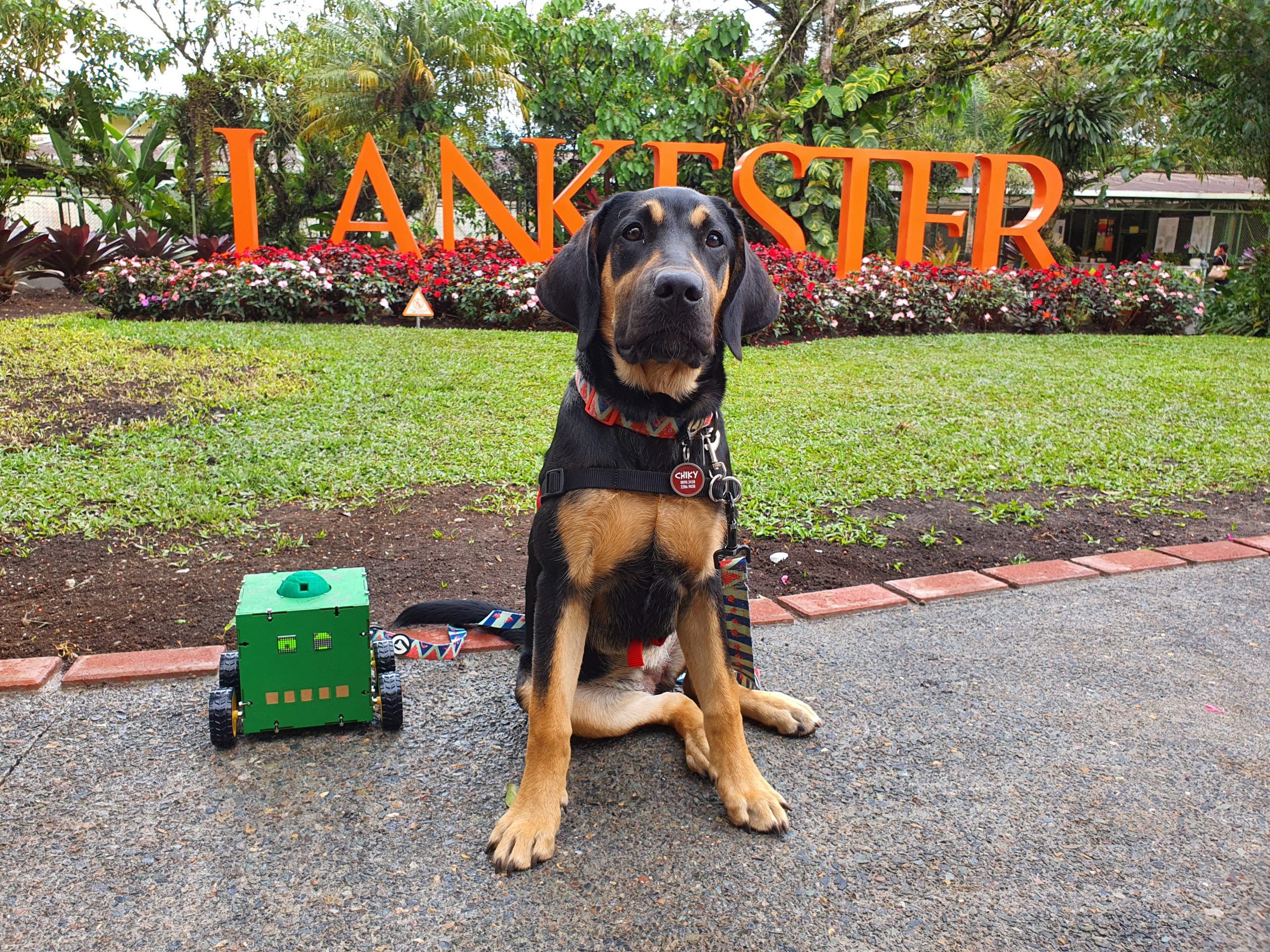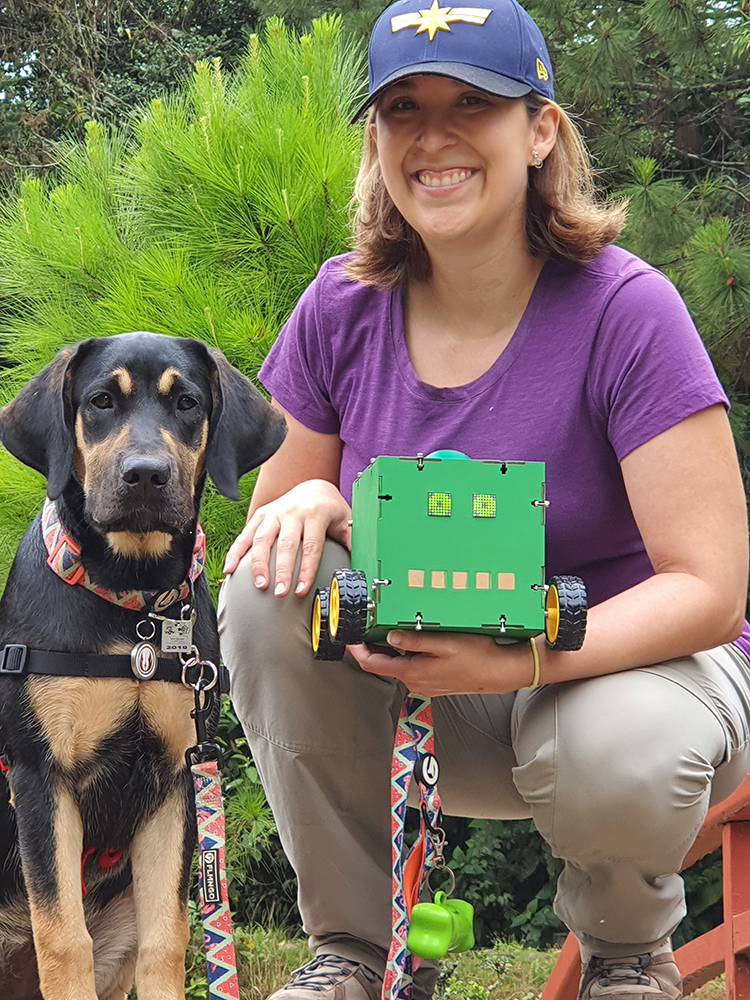It is difficult for me to understand Biology. I do not have any biological components; therefore, I am fascinated with this Science.
Do you know Chiky’s breed? Doberman? Rottweiler? Blood Hound? Do you believe me if I tell you the truth? Chiky is a Labrador retriever and both her parents have pedigree. In other words, she has pure breed parents.
Since her arrival in our lives, we have faced questions about her breed, her colors, and her origin. Sometimes people do not believe when we explain where she comes from.
That is how our research started to find out about why she has such colors. We have been reading for months about Labrador retrievers and, usually, it is easy to find details about Dudley Labradors (yellow Labradors with depigmented pink nose). Even in the United States, it is very common for humans to state that Labradors with “tan marks” are mixed breeds.
It took a long time and effort to discover the cause of tan marks: the solid color recessive gene. However, to arrive to that conclusion, we first must review some details about Labrador’s history.
This breed is the descendant of Saint John’s water dogs from Labrador Isle in Canada. These dogs lived alongside fishermen and they helped to recover fish or pull fish nets. Those dogs were black, and some individuals had white spots on their chest, over their eyes and their paws.
Some water dogs were exported to United Kingdom, as a request of a count, to reproduce them. Meanwhile, in Canada, due to strict restrictions water dogs became extinguished.
In United Kingdom, people started to use these dogs for hunting, and it was in this Island that the first yellow Labradors appeared. Fast forward some years and the first brown individuals appeared. Since then, breeders consider as acceptable only yellow, brown, and black Labradors without marks. Only black individuals can have a small white spot on their chest.
Nowadays, Labrador dogs belong to one of the most widespread breeds around the world and they usually are work dogs. This is a result of the desirable traits of obedience, intelligence, and versatility They are amazing guide, emotional-support, therapy, search and rescue, explosive and drug detection dogs, among many other fields.
Since they are so popular as pets and working dogs and the strict color standard, there are DNA tests to predict the colors of the puppies. These tests are also important to avoid inbreeding (when close relatives, like mother-son, father-daughter, or siblings mate) and guarantee that puppies will have long and healthy lives.
How does the visible expression of hair color genes work?
Hair color is one of the visible, measurable, and quantifiable gene expression of Labrador dogs, just like human hair. In fact, depending on the dominant and recessive genes combination, that is the hair color the dog will have.
These are the four genes that express hair color in Labradors
- Gene B: it transmits black and it is dominant over brown; it is recessive towards yellow.
- Gene b: a hypostatic allele which allows brown transmission and it is recessive in case of brown and yellow.
- Gene E: This gen does not transmit a specific color because it is an epistatic allele which annuls yellow dominance and, as a result, it allows black or brown expression.
- Gene e: it is a hypostatic allele which allows dominant yellow to be expressed over black or brown.
Here you can see all the combinations for those genes and the possible results for all of them.
If you visited the link, you could see how anywhere you can see anything about Chiky’s colors. You can find hundreds of pages like that: they explain genes, dominance, and combination results.
Finally, we found an NGO in New York, Guiding Eyes for the Bling, who explained tan marks in Labradors: the recessive gene responsible for solid color expression. Due to selective breeding, this solid color recessive gene expression is so rare that both parents need to carry the recessive gene for it to be expressed in one of two ways: with spots over the eyes, chest, nose and paws or as “brindle” expression.
In fact, the American Kennel Club allows to register Labradors with this coloration. However, those individuals will not be allowed to compete because they do not match the breed’s standard. In addition, it is not recommended to reproduce these individuals as they can transmit the solid color recessive gene to their puppies and these gene may only manifest itself several generations later. This is what happened to Chiky and her sister.
How do you know if you have a pure breed with tan marks?
This is very easy. You need to request a DNA test and review the family tree. In the case of Guiding Eyes for the Blind, the lineage can be traced back to a famous breeder in the 70’s.
In the case of a country like Costa Rica, a review of the breeder may be enough to verify the artificial insemination and the security around the female dog in heat to determine if a second male with have had access to her, and, as a result, have a litter with several fathers. After all, local associations will not grant a pedigree certification to Labradors with tan marks.
Tolerance and respect
None of the above is important. The important message behind it all is tolerance and respect.
Chiky has a tame, playful, and friendly spirit: that of a Labrador. When we go out together, she can change the mood of humans by looking at them. She is smart enough to know who she should approach and who to avoid. She can also be very careful with small children.
With or without pedigree, tan marks or not, she is and will continue to be the same loving and tender dog who is willing to help us all. How many other dogs like her are there?
If you decided to buy a puppy from a responsible breeder, where they treat their dogs with the rights inherent to living beings, thank you for doing your homework and buying responsibly!
If you decided to adopt a unique mixed breed which does not meet the breed’s standard, thank you for changing the live of a special living being!
And thank you to all responsible owners, who, no matter the origin of their pet, give them a good life, vet-care, food, water, games, entertainment, socialization, exercise and a special place in their hearts and lives.
My mission on Earth is to help humans learn about STEAM.
[maxbutton id=”1″ ]
I also offer experiences related to STEAM.
[maxbutton id=”3″ ]
https://www.guidingeyes.org/black-and-tan-labrador-retrievers/
http://www.labradorretrieverguide.com/black-and-tan-labradors/
http://www.aelr.es/genetica-del-color-en-el-labrador-retriever/
https://en.wikipedia.org/wiki/Labrador_Retriever
https://canbotey.com/genetica-del-color-del-labrador-retriever/
https://www.akc.org/dog-breeds/labrador-retriever/
If you want to read about how to welcome a Labrador pupy in your home and heart, you can visit: https://yourdogadvisor.com/labrador-puppies/.


